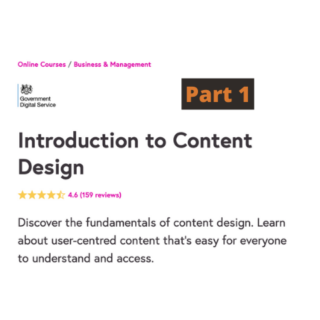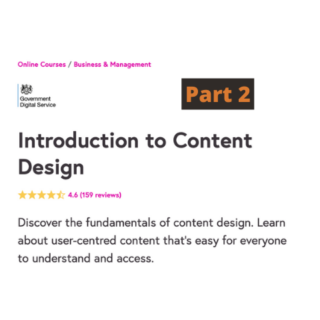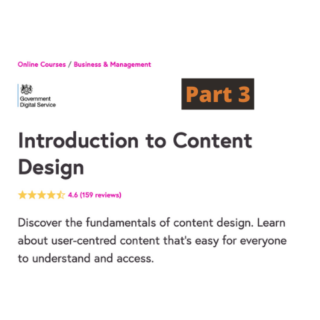Our Content Specialist, Ben, describes what he’s learnt about the relationship between data and content in the GOV.UK Content Design course
A few weeks ago, our content specialist, Ben, embarked on his journey to understand more about content design and how it can be used to create more inclusive and user-focused digital services.
He enrolled on the Introduction to Content Design course being delivered by the Government Digital Service (GDS) on the FutureLearn course platform.
How to tell when content is under performing with data
What metrics should be used, and why?
As a content creator, it’s easy to get into the habit of churning out content with little to no evaluation on how that content is performing. And what that particular content’s lifecycle is.
Going into this course, I was lucky in that I understand the different data points that can be used to assess content, and I’m fairly proficient at finding my way around a Google Analytics dashboard, it’s just not something I do on the regular.
As content creators we should be looking at the following metrics:
- Unique page views
- Page views
- Entrances
- Bounce rate
- Average time on the page
Understanding the metrics
Thankfully the course broke down exactly what each metric tells us
- Unique page views – the number of visits in which that page was viewed
- Page views – the count of every time that page was viewed
- Entrances – the number of times the page was the first page on the site that users visited.
- Bounce rate – the percentage of visits where this was the only page visited on the site.
- Average time on page – how long the user spent on the page
What’s the aim of the content being produced?
When I’m producing content, this is something I tend to think about long and hard. Especially since passing the previous stages of this course.
However, when it comes to looking at our content, we should be able to answer the following questions, simply by looking at metrics:
- Are users engaged and interested in this content?
- Are users completing a service from beginning to end?
- Do users find this website useful?
- Are users able to find the answers to their question quickly?
- Are users staying on the site and looking at multiple pages?
Interpreting data
The course got us to analyse the ‘Bank Holidays’ page for GOV.UK.
As an information page, we expect this page to only be viewed once by a person, and for them to find the information they need and then leave.
With that we can expect:
- The page may have a high bounce rate
- Unique page views and page views should be a similar number
- Average time spent on the page should be low.
Looking at another example, for ‘Understanding your driving license’. This page is an information page. People should be reading about their driving license
With that we can expect:
- The page should have a low bounce rate
- Average time spent on the page should be a fairly long time
The point of this exercise is to recognise that data will be different for every page, depending on the purpose of it.
We often perceive certain data points as being bad, but this isn’t necessarily the case. The stigma around time spent on a page is that anything low is a bad thing and we should be capturing readers for as long as possible. This is true for a long-form piece of information but for a very simple piece of information, the user may get all they need within 10 to 20 seconds.
Iterate and improve frequently
The course shows that when you have a good idea of your content’s purpose, you should be able to predict what the data will say before even looking at it.
If your data shows something happening that shouldn’t be happening, such as, users spending less than 30 seconds on a long-form information page, then it’s important to understand why this is happening.
Here’s some of the things that could inform you of how to improve:
- User research
- Looking at what users are searching on your site – have user’s search habits changed since publishing the content? What can you do to help them?
- Does the title match up with the content?
- Is the content in Plain English?
These are some of the things that could be impacting the way your users are using your site.
Conclusion
This is only a very brief summary of some of the things that I learnt in this section of the course.
As mentioned at the beginning of this blog, as a content creator, it’s very easy to not monitor content consistently and improve it when necessary. I’m ashamed to admit that I’ve produced many content pages that I’ve then left alone, and not tinkered with or improved based on what users want.
It’s amazing how data can be used to influence content decisions. And how some of us just look at data from a top-level and never delve into the depths of it.
So with that being said, I’ll be sitting looking through Google Analytics if anyone needs me!



